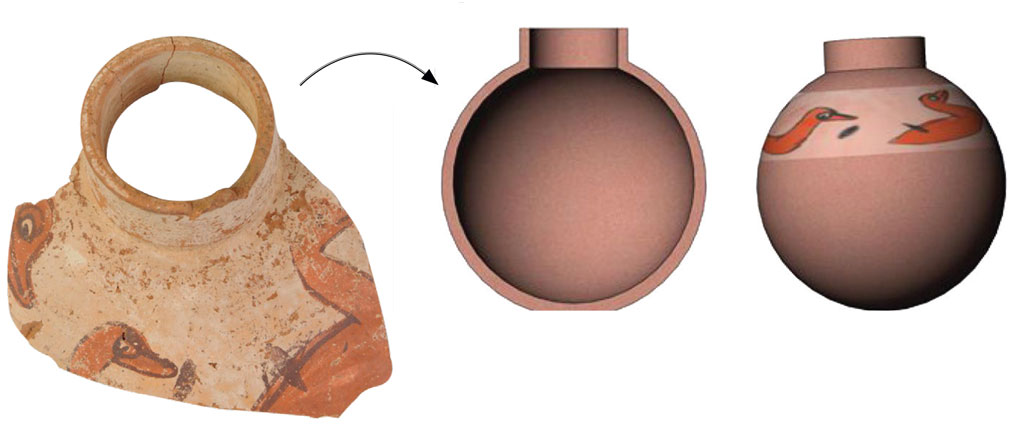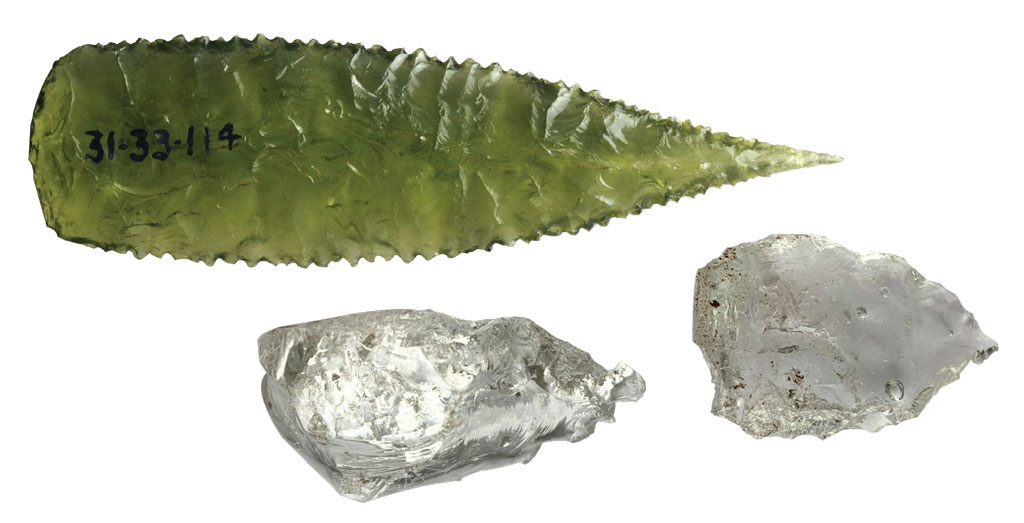In The Labs
This has been a year of teaching remotely in the Center for the Analysis of Archaeological Materials (CAAM). Social distancing has challenged CAAM’s commitment to student work with Museum collections, hands-on experiences with real materials, and chances to apply key instrumental methods in the Center’s labs. This fall, the 54 students in CAAM’s foundation course Food and Fire: Archaeological Science in the Laboratory were spread across 16 time zones. I was still hopeful that students could become familiar with materials and artifacts as they learned archaeological research methods, and could demonstrate critical thinking while choosing an individual project.
Food and Fire students used Canvas software for readings and assignments and met on Zoom for live classes, recitations, “office hours,” and “lab hours.” Academic Engagement staff produced custom videos about key collections and we pulled from the Museum’s archives of recorded lectures and presentations. Combining in-person sessions and digital resources let the students get to know me and teaching assistants Chelsea Cohen and Chris LaMack, but fell short of our intentions for hands-on, touch-based learning. We longed for our students to engage with the real thing.

Museum Object Number(s): E9021.21
To get materials into students’ hands, we shipped each one a custom kit of modern flint, obsidian, copper ores, clay, textile fibers, and animal bone. Small artifacts (coins, pottery sherds, and beads from the long-ago 20th century) let students practice observing, measuring, and describing unfamiliar objects. A simple measuring tool (a 10 m length of string) for a mapping project was also a cordage sample. Each student ordered a USB plug-in digital microscope to observe and photograph details of their materials. In dorms, kitchens, and backyards, students mixed clay with temper and water, cold-worked copper, and cleaned and spun their own raw cotton and wool.
The material kit was a welcome dose of real life in a semester dominated by computer screens. Students posted microphotos and commentary of experimental results each week. Hands-on experiences could extend beyond a 50-minute class period, so students could observe as physical changes appeared over several hours or days, or could start again when results were unexpected (or failed). The advantage of enough time stood out with the water flotation experiment, where tiny soil samples with modern microartifacts were opened on Monday and processed by water separation and dried at home during the week. Students met with archaeobotanist Chantel White during recitation to share images of finds and ask questions. In September, CAAM’s digital archaeologist Jason Herrmann got everyone outside to map and record grave markers in cemeteries across the world. During an average semester, this reflective and self-directed learning sometimes gets lost as students rotate between lab stations in our faster-paced classroom labs.
For the final project, keepers of collections in the Museum’s curatorial sections approved a list of objects with interesting and important stories and lots of visual detail. Collections staff took detailed pictures of the chosen artifacts, and Penn Libraries’ emergency digital services scanned background materials from books and journals to post on Canvas. After students absorbed as much as they could from excavation records and photographs and wrote preliminary descriptions, we met the objects in the Collection Study Room. Objects were live-streamed with a document camera for closeups and a digital microscope for views up to 100x. Students scrutinized surfaces, asked for measurement data, and got a chance to request specific views and information to be posted to the class website. The final papers showed some tradeoffs: students got the scale and detail of the objects, and were successful in drawing connections between object, maker, archaeological context. The documentary records of the object and the other items that had been found with the pieces were more important to the students than specific physical details. Though remote from their real object, some students rummaged back in their material kits to test some of their ideas about how hard a particular material was to work (very hard!) or how much skill a simple item might demand from an artisan (lots!). This impulse to experience the work of creating the artifacts confirmed what I’d seen in past years: that direct experiences with materials are critical to understanding the archaeological record.

Museum Object Number(s): 31-33-114
I have renewed appreciation for the Museum’s role in visual education, even in a course focused on individual objects. The visual experience of seeing many wonderful objects in one room sparks broad understanding and leads students to attach more meaning to artifacts that they had a chance to study intensively. Students are eager to get back into the Museum so that they can see more, now that they know how to understand the objects that they will see.
Katherine M. Moore is Mainwaring Teaching Specialist for Archaeozoology in the Center for the Analysis of Archaeological Materials.
